The Paragon is Revived
 Ingvald Heggem - Bergen, 1904 Ingvald Heggem - Bergen, 1904
In the month of October, on the banks Duwamish river at Terminal 107 park,
a dedication to this plot of land was performed. Ingvald Heggem’s drawing of the Paragon were
chosen to build a ribbed shell of the boat as a sculpture. Here are articles, links and photos
about the park.
The Paragon: Commemorating Fisheries Past
From Karen Bystrom
Above you is the skeleton of a North Pacific halibut schooner, at 5/8 scale. From
1911-1929, almost 150 similar fishing boats were built at Seattle area boatyards. Norwegian immigrant
fishermen commissioned boats that reflected what they knew from their experience fishing in cold seas.
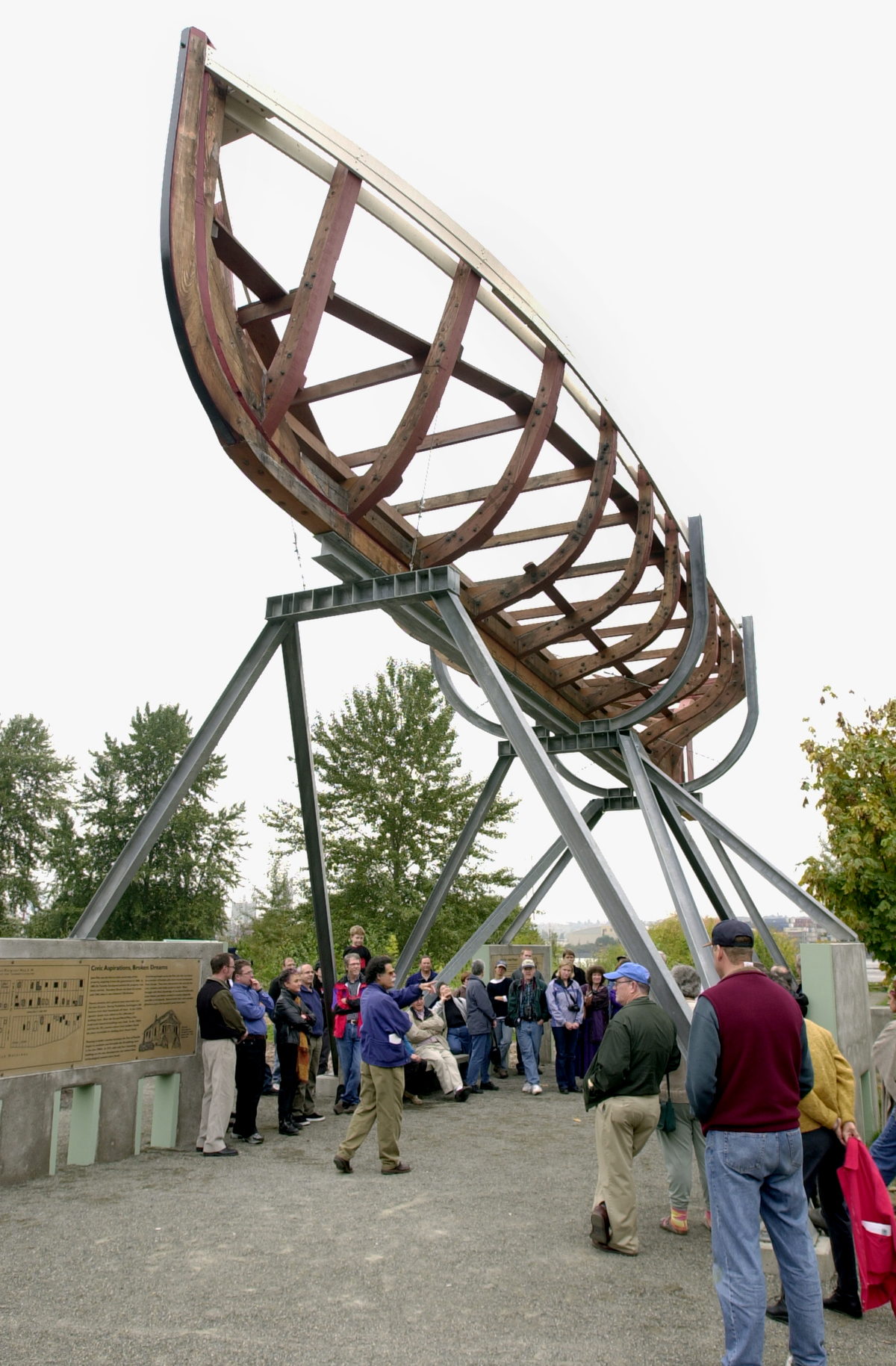 Dedication of the sculpture Dedication of the sculpture
Initially they fished for halibut in the Straits of Juan de Fuca. But by the time this type of boat was
designed, the halibut had been fished out locally, and schooners were being built to survive the dangerous
fishery in the Gulf of Alaska. As of 2002, when this sculpture was dedicated, 14 wooden halibut schooners
were still fishing in Alaska.
These commercial wooden fishing boats were designed in Seattle just when engines
were replacing sail power. The boat’s lines reflect that transition, looking back on traditional Norwegian
sailing boats as well as forward to the future of internally powered vessels. For decades, there were
several boatyards around the Duwamish, including Treuttle Marine Way, Nelson and Hanson, Tripple and
Everett and Admiral. Gillnetters and seiners, boat types used for herring and sardine fishing in other
fisheries, were produced here for salmon fishing. Many fishing boats, ranging from 30 to 50 feet, were
built on the river for Croatian, Italian and Greek fishermen, as well as for Scandinavians. Immigrants
brought knowledge of the boats and nets used in the North Sea, the Mediterranean, and the Adriatic, adding
significantly to Seattle’s boat-design lexicon.
This sculpture commemorates the communities that have existed in this area over
the past centuries. For more on the site’s long and rich history, see the other panels behind you.
This sculpture, and the other artworks at this site, were created by Donald Fels, commissioned with
Seattle Public Utilities 1% for Art Funds administered by the Seattle Arts Commission, City of Seattle,
Gregory J. Nickels, Mayor, in collaboration with the Port of Seattle.
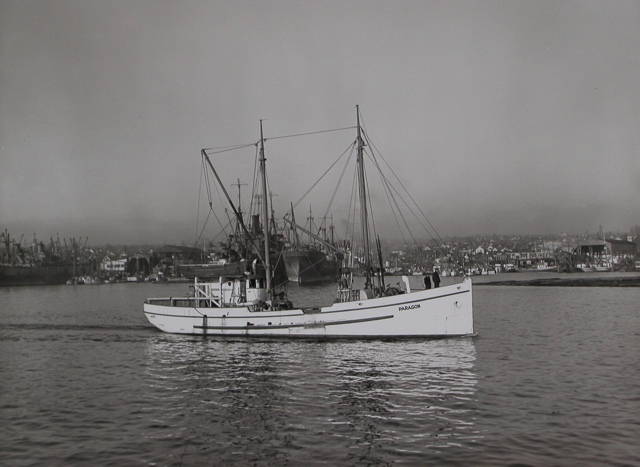 The halibut boat 'Paragon' The halibut boat 'Paragon'
The boat was framed to 5/8-scale from recycled fir timbers, using traditional methods,
by boat-building students at Bates Technical College in Tacoma. The project was begun in 1998, under the fine
guidance and inspiration of Capt. Mike Vlahovich, third-generation boat builder and Bates instructor, whose
grandmother lived at this site. The project was carried forth enthusiastically and completed splendidly by Chuck
Graydon and his students, in 2001.
Hats off to:
Marc Bright, Robert Byrd, Roger Ewart, Adam Groshong, Tom Hill, Jon Hunt, Jason Jackson,
Ben Jennings, Jeremiah Johnson, Sean Kirk, Cade Kraski, Brion Kuebler, Matt Landreth, Doug Laninga, Tim Lemon,
John MCCoy, Eric Moore, Doug Ochs, Wil Oliver, James Pettett, Ross Ratcliff, David Riggs, Quentin Sharp, Matt
Smallwood, Colin Smith, Ryan Stevens, Bryce Stevenson, Michael Wagner, Lorenzo Woodfin, Teresa Vlahovich, and
Kasy Zook.
The boat’s framework was constructed from plans originally drawn by I. Heggem for Fishing
Vessel Owners Marine Ways Inc., who christened three boats in the 1920’s from the design: the Paragon, Eagle,
and Foremost. Engineering for the sculpture was done by Izzat Hasayen of KPPF Engineers.
Links -
City of Seattle press release
Seattle outdoor art
Bates Boat Building
Terminal 107 park photos
Ingvald Heggem's drawing of the Paragon
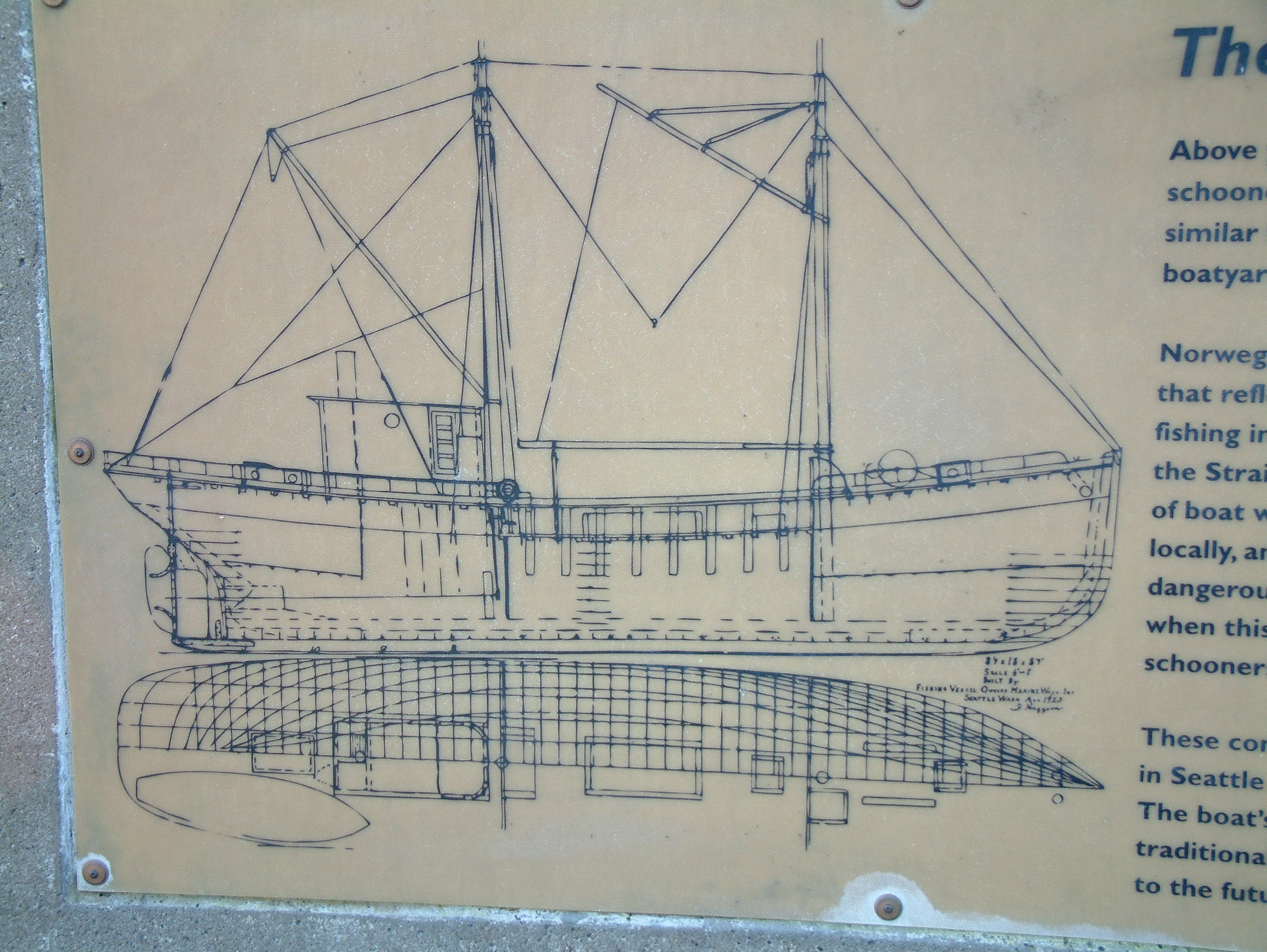 |
Interprets the fishing history of the Duwamish river
 |
Acknowledgements of all who helped
 |
The entire plaque commemorating the fishing industry
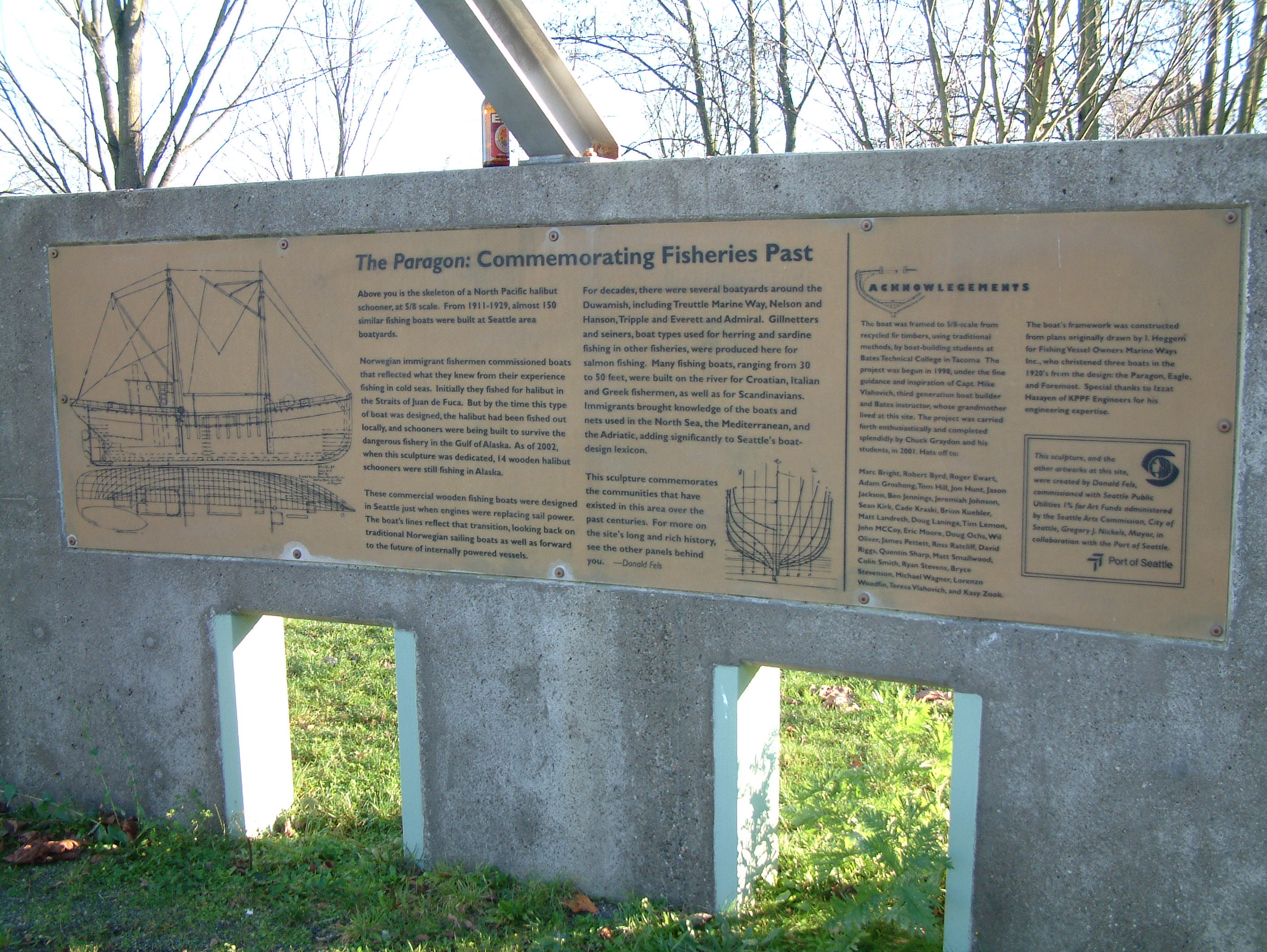 |
Describing the community that flourished and history
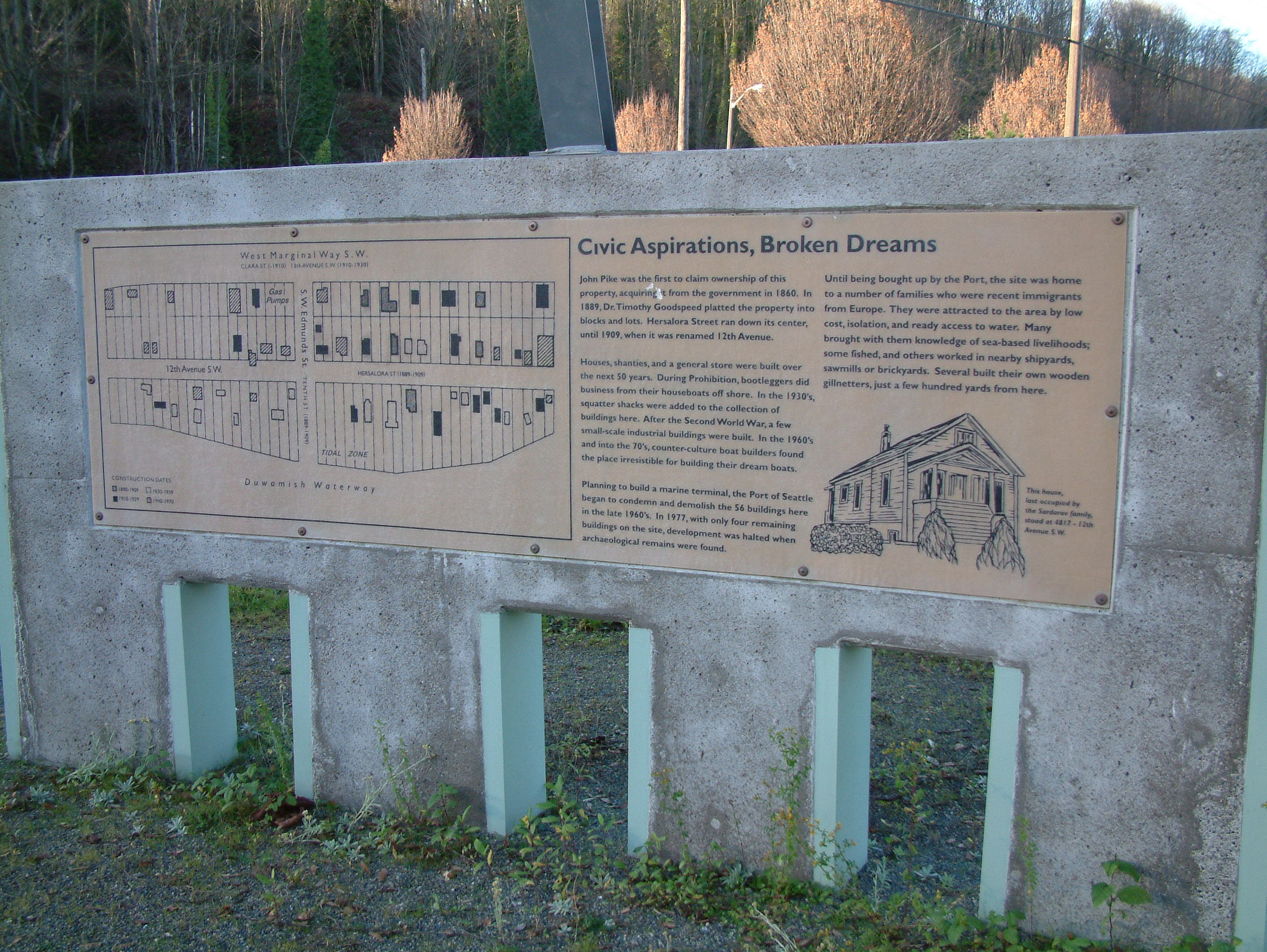 |
The indigenous people of the area - The Duwamish Indians
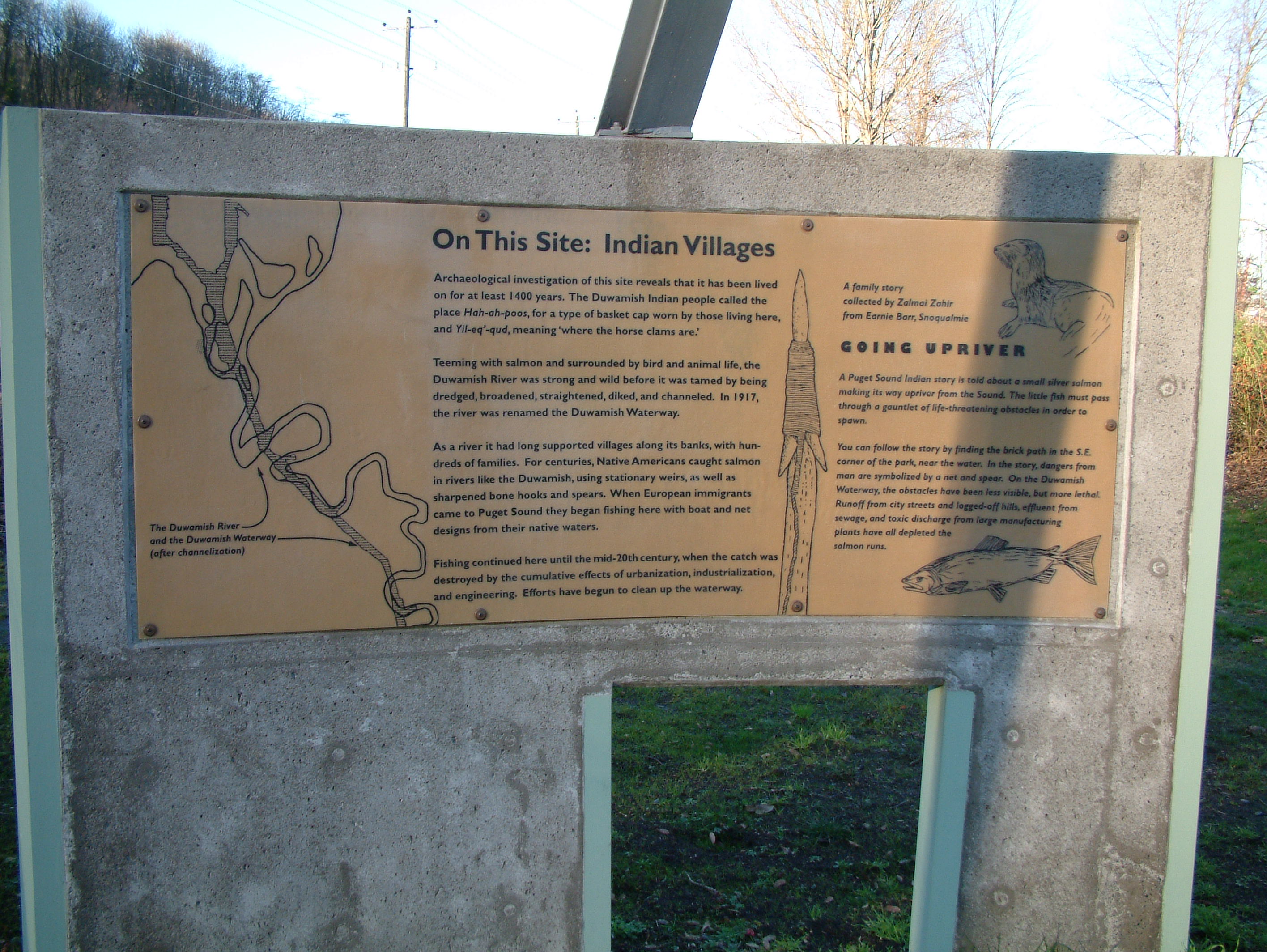 |
The Paragon frame sculpture
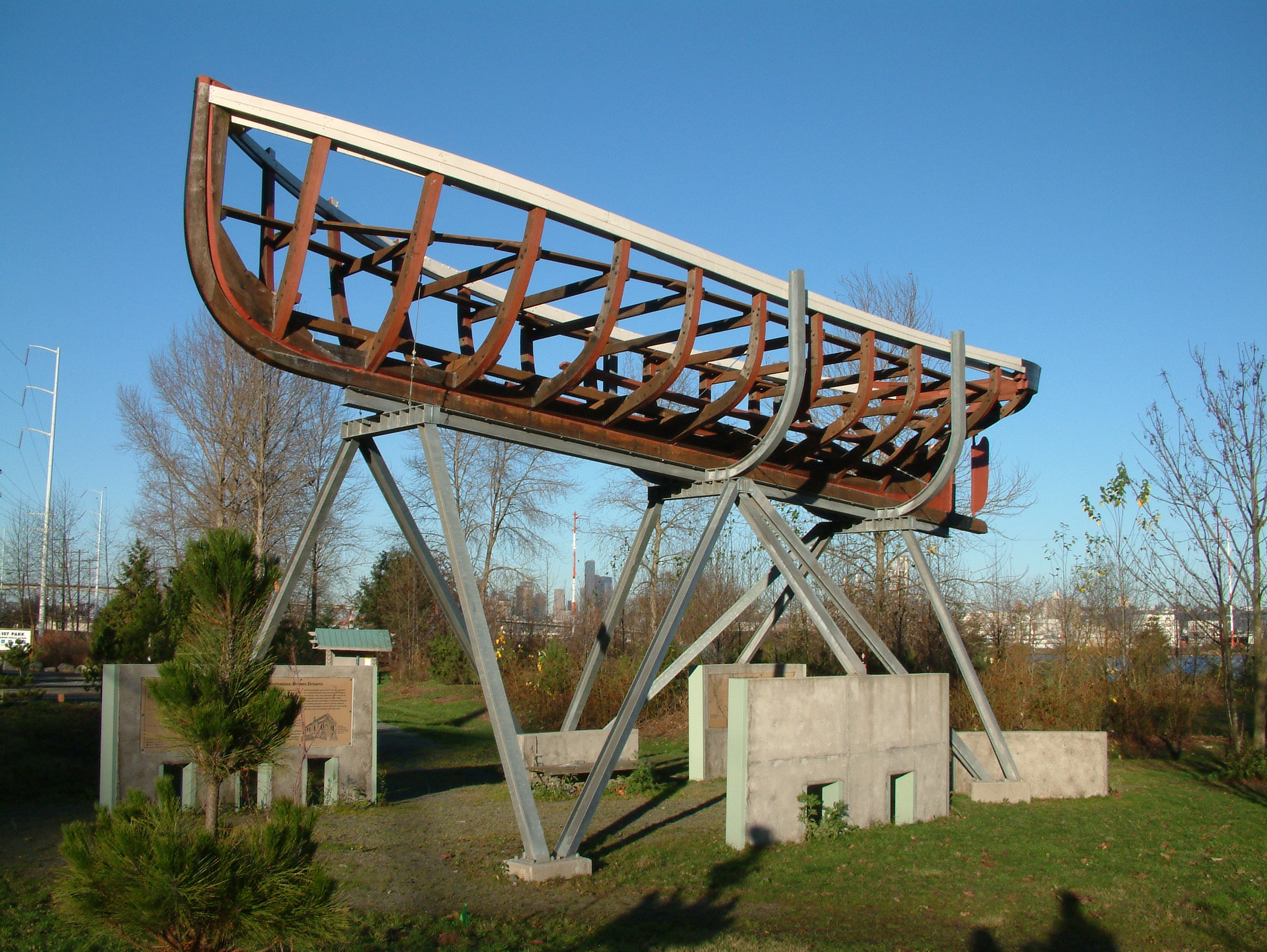 |
Ingvald's signature
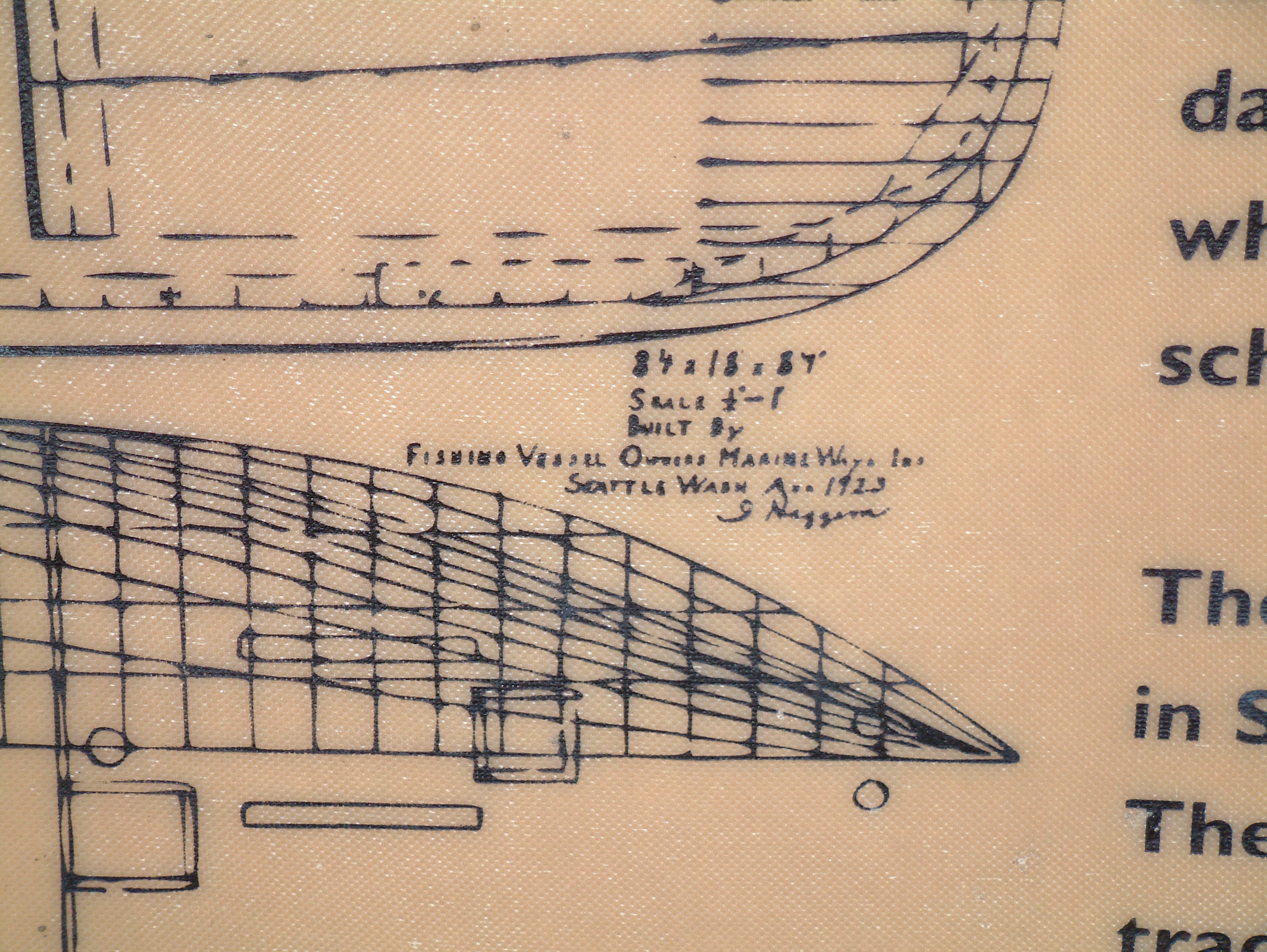 |
|

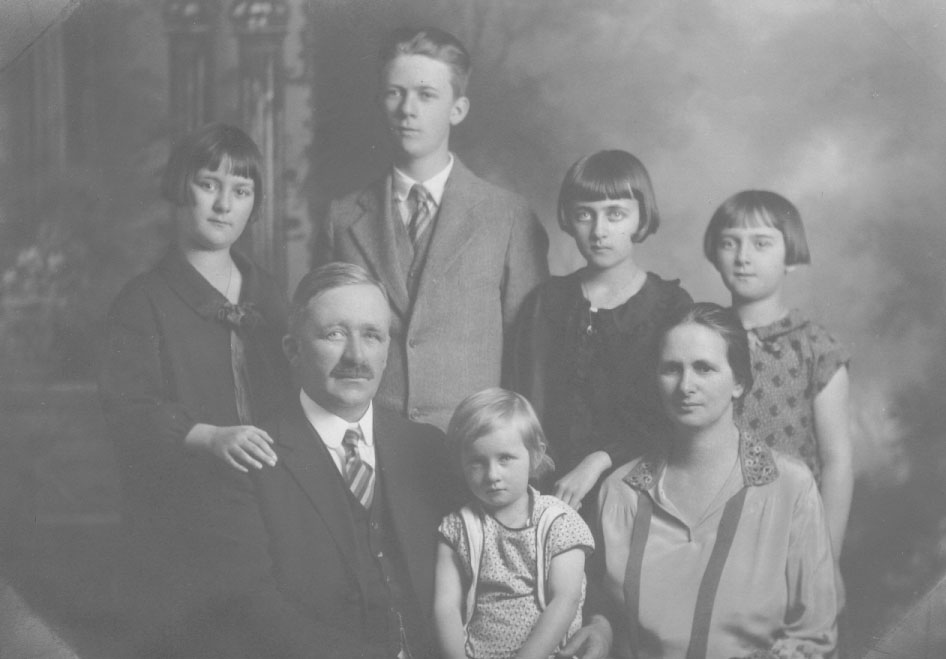
 Ingvald Heggem - Bergen, 1904
Ingvald Heggem - Bergen, 1904 Dedication of the sculpture
Dedication of the sculpture The halibut boat 'Paragon'
The halibut boat 'Paragon'






